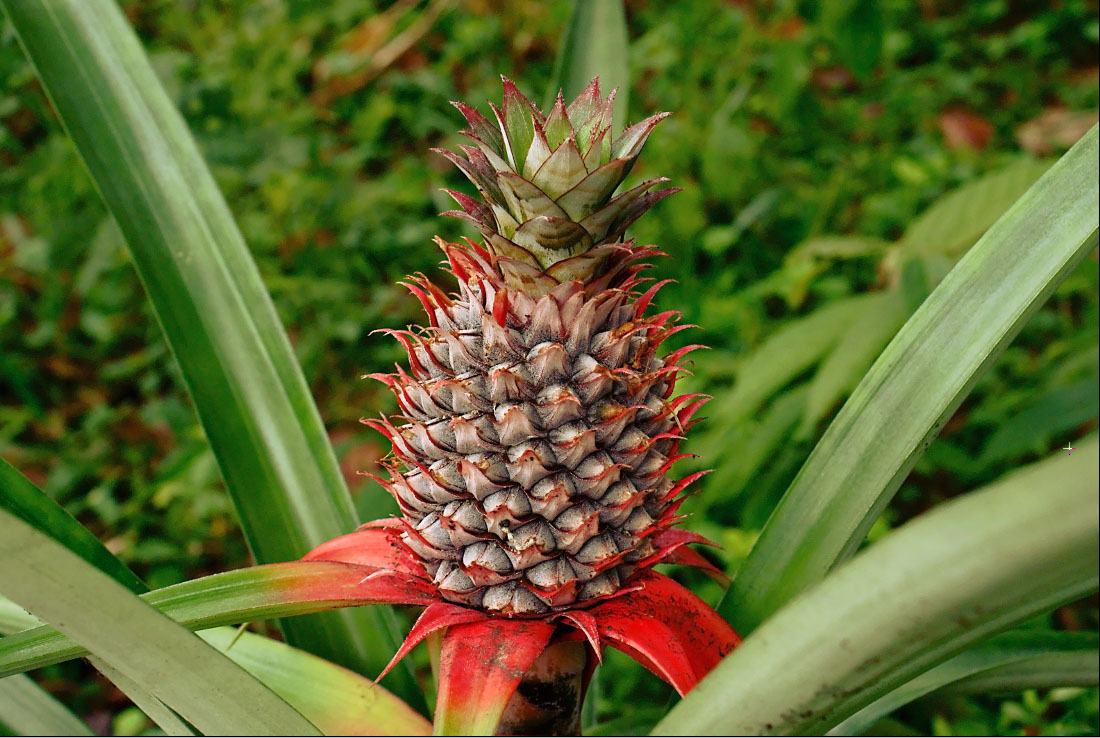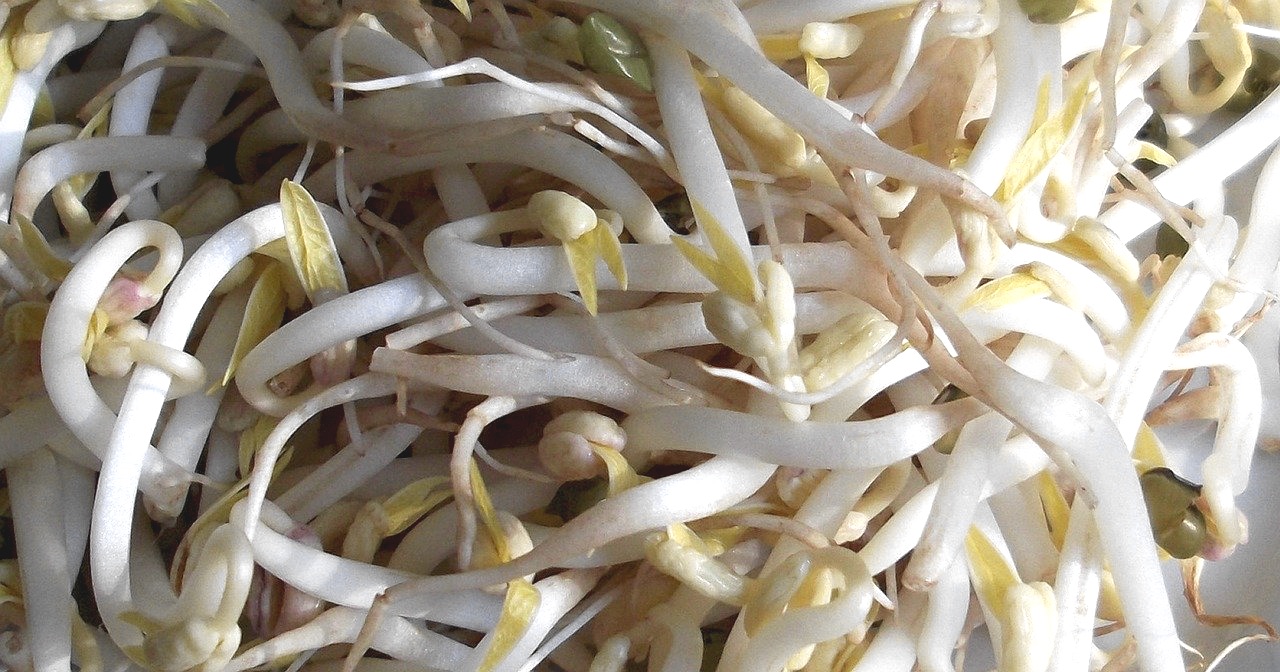Pineapple vs. Bean Sprouts
Nutrition comparison of Pineapple and Bean Sprouts
Ever wonder how your favorite foods stack up against each other in terms of nutrition?
We compared the nutritional contents of
pineapple
versus
bean sprouts
(100g each)
below using 2020 USDA and NIH data[1].
For a quick recap of significant nutrients and differences in pineapple and bean sprouts:
- Both pineapple and bean sprouts are high in Vitamin C.
- Bean sprout has 55% less carbohydrates than pineapple.
- Bean sprout has 58% less sugar than pineapple.
- Bean sprout has more riboflavin and folate.
USDA sources for nutritional information: Pineapple (Pineapple, raw, all varieties) and Bean Sprouts (Mung beans, mature seeds, sprouted, raw) . Have a correction or suggestions? Shoot us an email.
Calories and Carbs
calories
Bean sprout has 40% less calories than pineapple - pineapple has 50 calories per 100 grams and bean sprout has 30 calories.
For macronutrient ratios, pineapple is much lighter in protein, much heavier in carbs and similar to bean sprouts for fat. Pineapple has a macronutrient ratio of 4:94:2 and for bean sprouts, 33:63:5 for protein, carbohydrates and fat from calories.
Macro Ratios from Calories:
| Pineapple | Bean Sprouts | |
|---|---|---|
| Protein | 4% | 33% |
| Carbohydrates | 94% | 63% |
| Fat | 2% | 5% |
| Alcohol | ~ | ~ |
carbohydrates
Bean sprout has 55% less carbohydrates than pineapple - pineapple has 13.1g of total carbs per 100 grams and bean sprout has 5.9g of carbohydrates.
dietary fiber
Bean sprout has 29% more dietary fiber than pineapple - pineapple has 1.4g of dietary fiber per 100 grams and bean sprout has 1.8g of dietary fiber.
sugar
Bean sprout has 58% less sugar than pineapple - pineapple has 9.9g of sugar per 100 grams and bean sprout has 4.1g of sugar.
Protein
protein
Bean sprout has 463% more protein than pineapple - pineapple has 0.54g of protein per 100 grams and bean sprout has 3g of protein.
Fat
saturated fat
Both pineapple and bean sprouts are low in saturated fat - pineapple has 0.01g of saturated fat per 100 grams and bean sprout has 0.05g of saturated fat.
Vitamins
Vitamin C
Both pineapple and bean sprouts are high in Vitamin C. Pineapple has 262% more Vitamin C than bean sprout - pineapple has 47.8mg of Vitamin C per 100 grams and bean sprout has 13.2mg of Vitamin C.
Vitamin A
Pineapple and bean sprouts contain similar amounts of Vitamin A - pineapple has 3ug of Vitamin A per 100 grams and bean sprout has 1ug of Vitamin A.
Vitamin E
Pineapple and bean sprouts contain similar amounts of Vitamin E - pineapple has 0.02mg of Vitamin E per 100 grams and bean sprout has 0.1mg of Vitamin E.
Vitamin K
Bean sprout has 46 times more Vitamin K than pineapple - pineapple has 0.7ug of Vitamin K per 100 grams and bean sprout has 33ug of Vitamin K.
The B Vitamins
Bean sprout has more riboflavin and folate. Both pineapple and bean sprouts contain significant amounts of thiamin, niacin, pantothenic acid and Vitamin B6.
| Pineapple | Bean Sprouts | |
|---|---|---|
| Thiamin | 0.079 MG | 0.084 MG |
| Riboflavin | 0.032 MG | 0.124 MG |
| Niacin | 0.5 MG | 0.749 MG |
| Pantothenic acid | 0.213 MG | 0.38 MG |
| Vitamin B6 | 0.112 MG | 0.088 MG |
| Folate | 18 UG | 61 UG |
Minerals
calcium
Pineapple and bean sprouts contain similar amounts of calcium - pineapple has 13mg of calcium per 100 grams and bean sprout has 13mg of calcium.
iron
Bean sprout has 214% more iron than pineapple - pineapple has 0.29mg of iron per 100 grams and bean sprout has 0.91mg of iron.
potassium
Pineapple and bean sprouts contain similar amounts of potassium - pineapple has 109mg of potassium per 100 grams and bean sprout has 149mg of potassium.
Antioxidants and Phytonutrients
flavonoids
Naturally occuring in fruits and vegetables, flavonoids are associated with many health benefits and used in a variety of medicinal and pharmaceutical applications. [2][3]
For specific flavonoid compounds, both pineapple and bean sprouts contain small amounts of quercetin.
| Pineapple | Bean Sprouts | |
|---|---|---|
| luteolin | 0.01 mg | ~ |
| myricetin | 0.01 mg | ~ |
| Quercetin | 0.14 mg | 0.15 mg |
| kaempferol | ~ | 0.33 mg |
Omega-3 and Omega-6
omega 3s
For omega-3 fatty acids, both pineapple and bean sprouts contain significant amounts of alpha linoleic acid (ALA).
| Pineapple | Bean Sprouts | |
|---|---|---|
| alpha linoleic acid | 0.017 G | 0.016 G |
| Total | 0.017 G | 0.016 G |
omega 6s
Comparing omega-6 fatty acids, both pineapple and bean sprouts contain small amounts of linoleic acid.
| Pineapple | Bean Sprouts | |
|---|---|---|
| linoleic acid | 0.023 G | 0.042 G |
| Total | 0.023 G | 0.042 G |
Customize your serving size
The comparison below is by common portions, e.g. cups, packages. You can also see a more concrete comparison by weight at equal weight (by grams) comparison.
Note: The specific food items compared are: Pineapple (Pineapple, raw, all varieties) and Bean Sprouts (Mung beans, mature seeds, sprouted, raw) .
Pineapple g
()
|
Daily Values (%) |
Bean Sprouts g
()
|
|||||
|---|---|---|---|---|---|---|---|
| KCAL % |
|
5% | calories | 5% |
|
KCAL % | |
| G % |
|
5% | carbohydrates | 5% |
|
G % | |
| G % |
|
5% | dietary fiber | 5% |
|
G % | |
| G | 5% | sugar | 5% | G | |||
| G % |
|
5% | total fat | 5% |
|
G % | |
| G % |
|
5% | saturated fat | 5% |
|
G % | |
| G | 5% | monounsaturated fat | 5% | G | |||
| G | 5% | polyunsaturated fat | 5% | G | |||
| G | 5% | trans fat | 5% | G | |||
| MG | 5% | cholesterol | 5% | MG | |||
| MG % |
|
5% | sodium | 5% |
|
MG % | |
| 5% | Vitamins and Minerals | 5% | |||||
| UG % |
|
5% | Vitamin A | 5% |
|
UG % | |
| MG % |
|
5% | Vitamin C | 5% |
|
MG % | |
| IU % |
|
5% | Vitamin D | 5% |
|
IU % | |
| MG % |
|
5% | calcium | 5% |
|
MG % | |
| MG % |
|
5% | iron | 5% |
|
MG % | |
| MG % |
|
5% | magnesium | 5% |
|
MG % | |
| MG % |
|
5% | potassium | 5% |
|
MG % | |
| MG % |
|
5% | thiamin (Vit B1) | 5% |
|
MG % | |
| MG % |
|
5% | riboflavin (Vit B2) | 5% |
|
MG % | |
| MG % |
|
5% | niacin (Vit B3) | 5% |
|
MG % | |
| MG % |
|
5% | Vitamin B6 | 5% |
|
MG % | |
| MG % |
|
5% | pantothenic acid (Vit B5) | 5% |
|
MG % | |
| UG % |
|
5% | folate (Vit B9) | 5% |
|
UG % | |
| UG % |
|
5% | Vitamin B12 | 5% |
|
UG % | |
| MG % |
|
5% | Vitamin E | 5% |
|
MG % | |
| UG % |
|
5% | Vitamin K | 5% |
|
UG % | |
| G % |
|
5% | protein | 5% |
|
G % | |
| UG % |
|
5% | biotin (Vit B7) | 5% |
|
UG % | |
| MG % |
|
5% | choline | 5% |
|
MG % | |
| MG % |
|
5% | chlorine | 5% |
|
MG % | |
| UG % |
|
5% | chromium | 5% |
|
UG % | |
| MG % |
|
5% | copper | 5% |
|
MG % | |
| UG % |
|
5% | fluoride | 5% |
|
UG % | |
| UG % |
|
5% | iodine | 5% |
|
UG % | |
| MG % |
|
5% | manganese | 5% |
|
MG % | |
| UG % |
|
5% | molybdenum | 5% |
|
UG % | |
| MG % |
|
5% | phosphorus | 5% |
|
MG % | |
| UG % |
|
5% | selenium | 5% |
|
UG % | |
| MG % |
|
5% | zinc | 5% |
|
MG % | |
| G | 5% | Water | 5% | G | |||
| G | 5% | Starch | 5% | G | |||
| G | 5% | Alcohol | 5% | G | |||
FAQ
Does pineapple or bean sprouts contain more calories in 100 grams?Bean sprout has 40% less calories than pineapple - pineapple has 50 calories in 100g and bean sprout has 30 calories.
Is pineapple or bean sprouts better for protein?
Bean sprout has 460% more protein than pineapple - pineapple has 0.54g of protein per 100 grams and bean sprout has 3g of protein.
Does pineapple or bean sprouts have more carbohydrates?
By weight, bean sprout has 60% fewer carbohydrates than pineapple - pineapple has 13.1g of carbs for 100g and bean sprout has 5.9g of carbohydrates.

